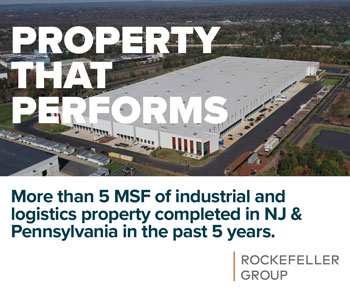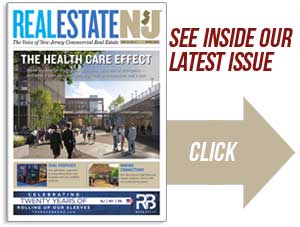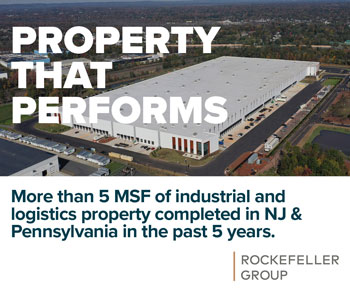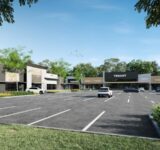By Michael G. McGuinness

With a growing economy and record low unemployment, real estate professionals are keenly aware that they are in the “labor business and must do things that attract and retain labor to their market and buildings,” according to CBRE’s Spencer Levy, who spoke at the Jan. 22 NAIOP New Jersey outlook event. This is no small feat in New Jersey, where the number of residents aged 22 to 34 declined by 2.3 percent between 2000 and 2013, as contrasted with a 6.8 percent increase nationally, according to a 2017 report by New Jersey Future. Despite low unemployment, there are still an estimated 180,000 unfilled job positions in our state, which helps substantiate CBRE’s 2017 Occupier Survey that ranked labor considerations and economic uncertainty 32 percent and 44 percent higher than the year before. This disturbing trend may help explain why many businesses are reluctant to plant roots here.
This deepening labor struggle has been several years in the making and impacts the entire country. Many factors are at play, not the least of which are the changing demographics and the retirement of the baby boomer generation. Individuals are setting up households and couples are starting smaller families later in life after they have saved enough money and can afford the cost of maintaining a home. Businesses and communities alike are struggling with succession planning, given the dearth of experience among millennials and the generation behind them.
For many companies and especially construction firms, this all-but-empty talent pipeline is pushing up wages and making the case for more creative human resource strategies. For example, some large contractors are keeping laborers on the payroll even if they are not currently needed. Others support training programs and recruit outside their geographical area. This challenge also highlights the need to improve productivity with 3D printing, building information modeling systems, predictive analytics tools and prefabricated construction, as discussed by Todd Burns in a Jan. 28 blog post on NAIOP.org.
This shortage of labor with the right skillset and talent is being felt across all sectors and is much more pronounced in some parts of our state. It’s also more complicated than just a plain skills gap. In some regions, the labor force may be there, but wages may be insufficient. Other reasons might be related to contract or part-time positions vs. full time with benefits, too far or difficult a commute (or the lack of reliable mass transit options) or the firm’s negative reputation for its culture or management. Employers cannot afford to minimize this last factor and should take their brand very seriously. That’s why firms like Reputation Defender are busy these days. The younger workforce relies more heavily on social media and the internet (Glassdoor, etc.) to gain information from current and former employees who anonymously post their reviews of how employers treat their employees. Don’t underestimate how fierce the competition among employers is for talent.
That is why successful firms consistently place employee satisfaction at the forefront of their workplace strategy. Given that work-life balance is difficult to achieve, it is instead being replaced by the concept of work-life integration. Mobile and cloud technology make it efficient to work from anywhere, so the office is becoming an optional place. In this type of job market, employees can be more selective and must be drawn to the workplace through a positive emotional connection. In turn, employers benefit from a collaborative and cohesive culture, because both formal and informal communication are more powerful face to face, according to CBRE’s Americas Occupier Survey 2017.
Building owners, businesses, communities and government officials — all of whom are in the real estate business, need to take steps to attract the younger generations who are today’s and tomorrow’s consumers and workforce. Let’s not forget that every one of us is in the hospitality business and our focus should be on becoming a “cool place.” For building owners, that likely requires the addition of soft elements that young workers demand such as cafés, recreational facilities, daylighting and green spaces. For businesses, it may mean the incorporation of experiential retail that is designed to stimulate the senses and engage the potential buyers. For communities, it may mean re-zoning to allow for a more urban, denser feel with mixed-use development, affordable rental units and places to gather such as bars and restaurants. For legislators and state executive agencies, it means incentivizing and easing up on the regulatory barriers and costs for businesses, especially small startups. It also means making liquor licenses more affordable and accessible.
Manhattan, Brooklyn, Philadelphia, Jersey City and Hoboken, which offer walkable communities with easy access to transportation, nightlife and 24/7 amenities, are magnets for the millennials and the employers that need them. It’s a shame that New Jersey spends more than any other state on K-12 education and then we export our kids to other states. It’s about time that we start to strategically invest in higher education, especially in the fields of high technology and software engineering, with big payoffs for our younger residents who stay here. We should learn from former New York City Mayor Michael Bloomberg, who decided to advance the transformation of Roosevelt Island into a high technology hub, once the financial services industry tanked.
The reasons for the “labor shortage” are varied, so policymakers should opt for targeted and not broad-brushed solutions to local needs where the employers are going. One such successful model is the EARN Maryland competitive workforce development grant program that is industry-led and regional in focus. This approach is employer- and demand-driven and addresses the workforce needs of a specific industry sector over a sustained period.
New Jersey has no time to lose, with immigration policy and job growth further tightening the labor market. We are running out of optimal and accessible space for warehouse and distribution centers and the related workforce as e-commerce sales are anticipated to more than double over the next few years from their current 8.5 percent to 20 percent. Businesses and government leaders should focus on addressing structural barriers that have prevented communities and their residents from realizing their full economic potential. They also should be investing in these same residents who have long been neglected and ignored. I would hope that many of our business corporations who will be realizing significant tax savings due to the recent federal tax reform legislation will invest that money back into their current and future employees, their most precious resource.
Michael McGuinness is CEO of NAIOP New Jersey and has guided the commercial real estate development association’s progress since he joined the staff in 1997. In addition to overseeing daily operations, programs and staff, McGuinness directs the chapter’s legislative activities and manages the Developers Political Action Committee (DPAC).










